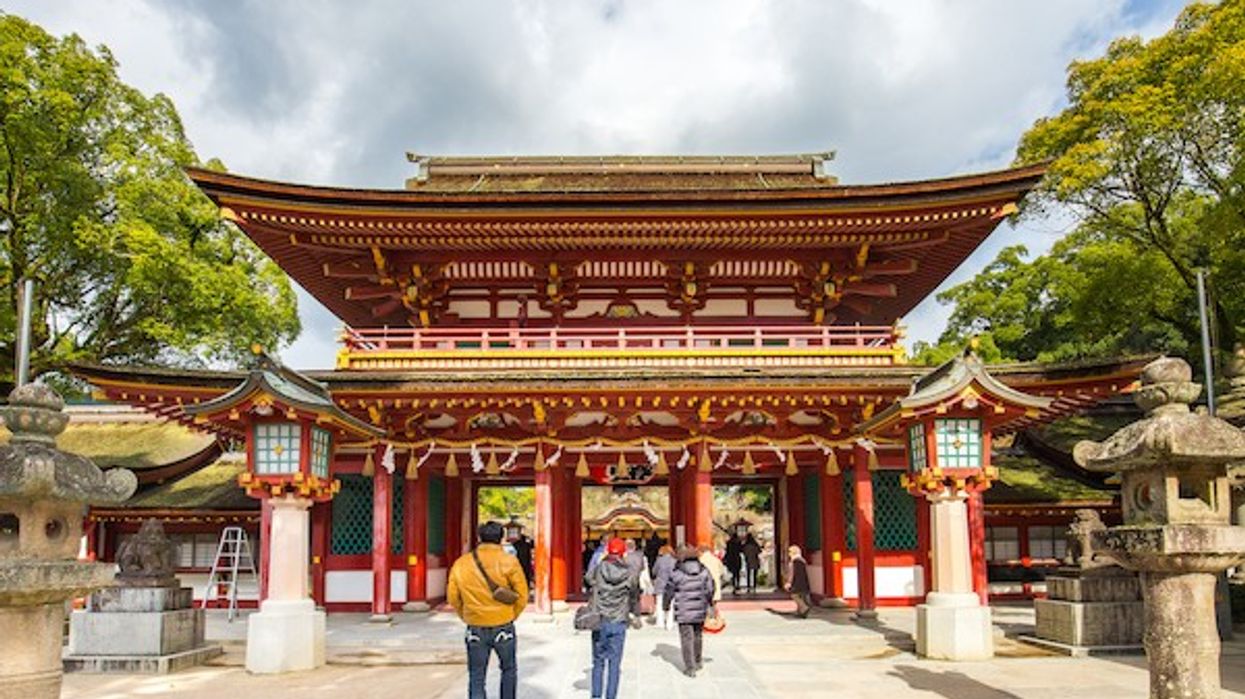Learn What Makes These Folktale Stories Great with SSFF & ASIA
SSFF & ASIA wants you to decide which of these three stories will become a short film in 2023.

The folktale tradition—from fairy tales to ghost stories—has been one of the longest-lasting forms of storytelling since humans could talk. The art of oral storytelling predates the written word and has been used to record information, teach morality, and untangle some of life’s greatest mysteries and wonders.
While storytelling has evolved, folktales still hold weight in every art form, including cinema. We have seen the resurgence of folktales in genre film, drawing inspiration from the folktale tradition to tell a new story for modern audiences.
Short Shorts Film Festival and Asia (SSFF & ASIA) wants to celebrate the style of storytelling by funding a short film that finds inspiration from a tradition that has been passed down from generation to generation, transcending every language and cultural barrier.
By teaming up with Japan Cultural Expo, SSFF & ASIA wants to highlight young writers creating short stories inspired by local legends set in various locations around Japan. This year, three exciting short stories set in Iwate, Shizuoka, and Okinawa are being celebrated. The creators behind these short stories sat down at SSFF & ASIA 2022 Screening in Autumn’s panel to talk about the background, development, and writing process behind each of their stories, showing us that there is always something more to a legend we hear throughout our lives.
Meet the Creators of Three Folktale Stories
The talented writers behind SSFF & ASIA’s Screening in Autumn Japanese Folktales short stories include Masami Kakinuma, Kento Norikane, and Bin Sugawara.
Masami Kakinuma
Born in Tokyo and raised in Kanagawa Prefecture, Masami Kakinuma is a writer known for her work for Juju, Snow Man, Johnny’s Jr., Musical: Touken Ranbu, The Prince of Tennis: RisingBeat, Love Live! Nijisaki High School Idol Club, Asaka, and Serena Kozuki. After working in the music industry, Masami went into writing, publishing a collection of essays, Tabi wo Sumikatosu, a collection of poems and drawings, Konya Kyoboudakara Watashi, and more.
Her short story, Go for it, follows Yuto as she revisits her grandmother in Iwate Prefecture. You can read Kakinuma’s story, translated into English by Sharni Wilson, here.

Kento Norikane
Kento Norikane is an author who lives in Hyogo Prefecture. His work includes Woman with a decayed tooth, Man on the opposite bank, and Ken-chan. Norikane has been awarded the 7th Book Shorts Award Grand Prize in 2021 and is looking forward to seeing his latest short become a short film.
His short story, The Two of Us, in a Town with a View of the Sea, tells the story of close friends Kanna and Miya as they navigate the complications that follow their friendship after they post a photo of themselves posing in front of the statue of Omiya and Kanichi on social media.
You can read the full short story, translated into English by Terry Gallagher, here.

Bin Sugawara
Poet Bin Sugawara has been writing and publishing poetry since 2011. Since publishing Naked on a Veranda, the Rabbit and his Minx, Sugawara has written a wide range of prose, hosted readings on radio shows, provided lyrics, and performed around the world.
Sugawara’s recent publications, Kanohito and Taking off our Seasons, the Two of Us Dive, are collections of poetry that evaluate human connection.
His short story for SSFF & ASIA, Jars of Amber, follows a protagonist’s move home to Fukuoka with a plum tree and the family memories attached to the tree. You can read the full short story, translated into English by Emily Balistrieri, here.

You can watch the full conversation between Kakinuma, Norikane, and Sugawara to learn how they craft their excellent stories and the process behind their work now on SSFF & ASIA's YouTube here.
One of these three stories will be chosen by SSFF & ASIA and Japan Cultural Expo to become a short film in 2023. Until we learn which short story will be made into a short film, we can learn from these writers what makes a great folktale so we can write our own.
Let us know which short story out of the three is your favorite in the comments!













